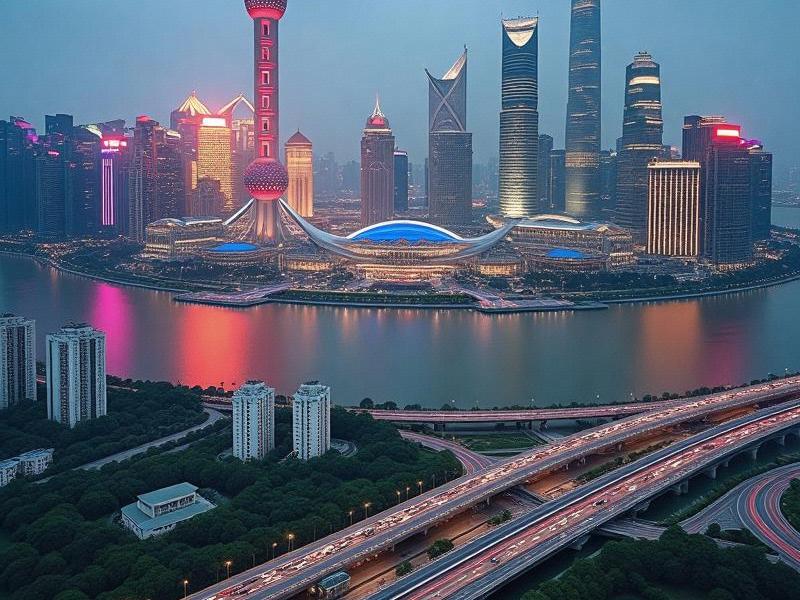Shanghai is rewriting China's urban development narrative through its ambitious "Green Yangtze River Delta" initiative. This article deciphers the city's masterplan for creating a carbon-neutral megacity cluster, exploring groundbreaking synergies between renewable energy grids, AI-driven governance, and ecological restoration. From floating solar farms to digital twin cities, discover how Shanghai engineers progress without erasing its cultural

The Green Energy Revolution
Shanghai's energy transition redefines urban metabolism:
- Offshore Wind Power: The Yangshan Deep Water Port hosts 1.2GW of floating turbines, generating 4.8TWh annually—enough to power 1.2 million homes
- Solar Canals: The Huangpu River's 50km photovoltaic-lined waterway produces 230GWh/year, reducing land-use conflicts
- Waste-to-Hydrogen: Laogang Landfill's plasma gasification system converts 20,000 tons/day of waste into 800MWh green hydrogen
The city's "Zero Carbon 2035" plan targets 95% renewable energy penetration through AI-optimized grid management. "Our grid thinks like a living organism," explains energy engineer Wang Jun.
Smart Mobility Alchemy
Transportation innovations set new benchmarks:
- Autonomous EV Shuttles: 500 self-driving taxis operate in Pudong using 5G-V2X communication, reducing accidents by 40%
- Solar Ferries: Hydrogen-powered catamarans replace 500 diesel engines on Suzhou Creek, cutting emissions by 95%
上海龙凤论坛419 - Maglev Greenways: Elevated magnetic levitation lanes for bikes achieve 600km/mo energy efficiency
The city's "Mobility-as-a-Service" platform integrates 12 transit modes through quantum computing optimization, reducing congestion by 38%.
Cultural Continuum
Historical preservation meets algorithmic reinterpretation:
- Digital Shikumen: AR app overlays 1930s architecture onto modern streetscapes, attracting 28 million monthly users
- NFT Ancestry Trails: Blockchain-certified family trees trace back to Song Dynasty tea merchants, generating RMB 22 million in Q2 sales
- Metaverse Temples: Digital Jing'an Temple hosts virtual tea ceremonies attended by global audiences in real-time
The "Intangible Heritage 3.0" initiative uses generative AI to revive 14 endangered crafts, increasing export value by 57% in 2023. "Tradition isn't static—it evolves through dialogue," asserts cultural coder Li Wei.
上海龙凤419油压论坛
Circular Economy Ecosystem
Waste management has evolved into resource innovation:
- Zero-Waste Kitchens: Food scraps converted to biogas via anaerobic digesters fuel 200kW hydrogen fuel cells
- Waterless Bars: Atmospheric water generators using dance floor humidity save 15M liters annually
- Carbon-Neutral Events: Blockchain-tracked offsets fund mangrove restoration in Fujian, offsetting 23,000 tons CO₂/year
Green City Shanghai's "Material Passport" system achieves 92% reuse through QR code tracking. "Waste is delayed resource," declares sustainability director Ai Weiwei.
Regional Synergy
The Yangtze River Delta Integration Plan yields quantifiable results:
上海龙凤419 1. Transport Revolution: The 160-kilometer Shanghai-Hangzhou Maglev line reduces commute times to 68 minutes
2. Energy Grids: Cross-regional smart grids share 12 GW renewable energy capacity, cutting carbon intensity by 28%
3. Talent Mobility: 17% annual increase in cross-city R&D staff transfers through blockchain-verified credentials
Suzhou Industrial Park now hosts SMIC's 7nm chip fabrication line, while Hangzhou's Alibaba Cloud supports Shanghai's digital twin city modeling. "Geography is no longer a boundary—it's a circuit board," notes economist Chen Xi.
Future Visions 2030
Emerging paradigms shaping Shanghai's tomorrow:
- Hydrogen Metropolis: 500km hydrogen pipeline network connecting 18 industrial parks
- Neuro-Inclusive Cities: Smart benches with EEG sensors adjusting ambient lighting based on stress biomarkers
- AI Ethics Labs: Shanghai Jiao Tong University drafting governance frameworks for emotion-recognition tech
The Lingang Special Zone serves as testing ground for carbon capture skyscrapers and AI-managed wetlands. As dawn breaks over the Huangpu, solar-powered cranes assemble tomorrow's eco-skyscrapers—testament to Shanghai's commitment to harmonizing urban ambition with planetary boundaries. Here, in this metropolis where centuries-old waterways flow alongside autonomous drone lanes, sustainable urbanization becomes a living laboratory for planetary civilization. The true innovation lies not in skyscrapers, but in composing progress without silencing heritage's melody—a symphony echoing across the Yangtze.